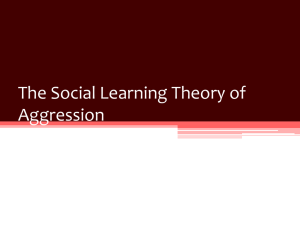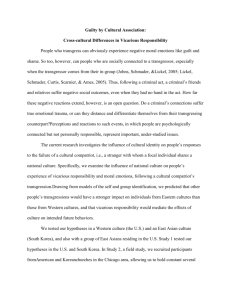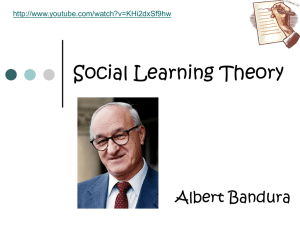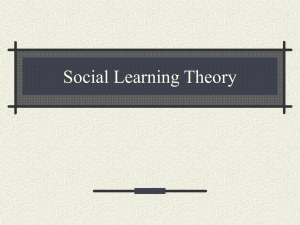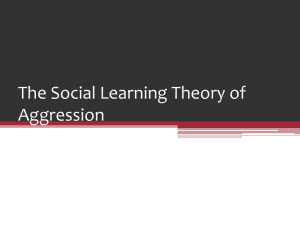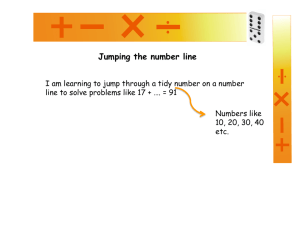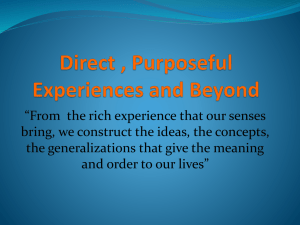Presentation File ()
advertisement
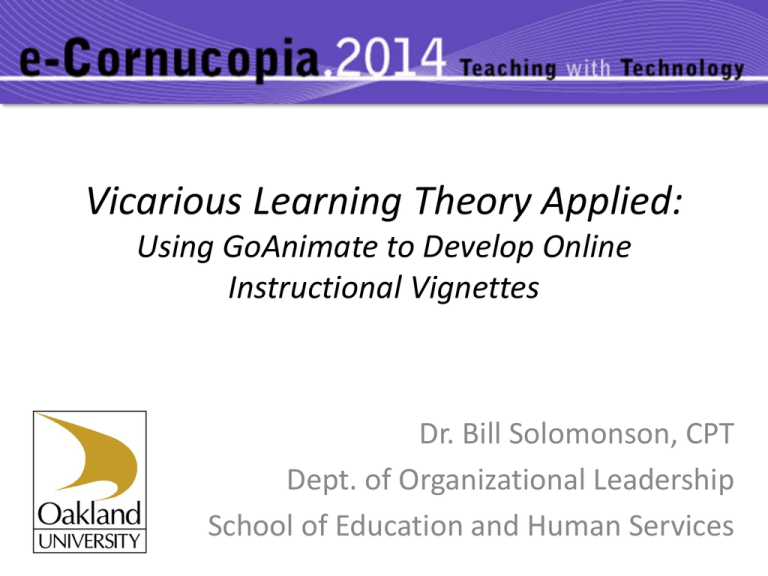
Vicarious Learning Theory Applied: Using GoAnimate to Develop Online Instructional Vignettes Dr. Bill Solomonson, CPT Dept. of Organizational Leadership School of Education and Human Services Human Learning… Multimedia Model of Learning Mental Model Formation/ Retrieval Instructional Methods Explicit Methods Overt behavioral activity Implicit Methods No overt behavioral activity How can computer-based instruction be designed to support knowledge acquisition processes when learners cannot physically interact with, or control the content of that which they are attempting to master? Vicarious Learning Theory Albert Bandura; 1962, 1986. Gholson, B., & Craig, S.D. (2006). Craig, S.D., Sullings, J., Witherspoon, A., & Gholson, B. (2006). Vicarious Learning environments: “Those in which learners see or hear content for which they are not the addressees and have no way of physically interacting with the source of the content they are attempting to master.” Craig, S.D., Sullings, J., Witherspoon, A., & Gholson, B. (2006). Vicarious Learning Talking with Grandpa – 1970s PSA on prejudice Pre-fab characters in GoAnimate, 2014 • Historical Perspectives – “Discourse” – Religious Texts – Socratic Method – Socratic Circles (modern pedagogy) Research References • • • • Bandura, A. (1977). Social Learning Theory. Englewood Cliffs, NJ: Prentice Hall. Clark, Ruth C. (2008-11-03). Building Expertise: Cognitive Methods for Training and Performance Improvement (Kindle Locations 5475-5477). Wiley Publishing. Kindle Edition. Craig, S.D., Sullings, J., Witherspoon, A., & Gholson, B. (2006). The deep-level reasoning question effect: The role of dialogue and deep-level reasoning questions during vicarious learning. Cognition and Instruction, 24(4), 565-591. Gholson, B., & Craig, S.D. (2006). Promoting constructive activities that support vicarious learning during computer-based instruction. Educational Psychology Review, 18, 119-139.


